The Best Stretches Before and After a Run
Dr. Christiane Wilke from the DSHS Cologne answers the biggest questions about stretching
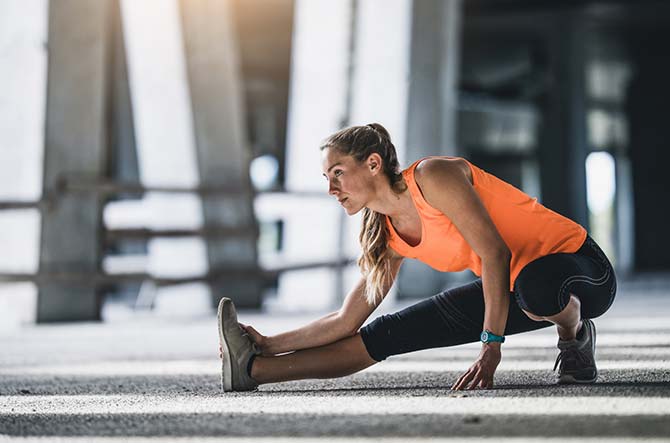
Stretching before and after training - a controversial subject. We asked Dr. Christiane Wilke from the German Sports University (DSHS) in Cologne about the scientific point of view on stretching. Read her answers here and learn the best stretches for runners.
Opinions on the usefulness of stretching differ greatly. Some are absolutely in favour while others claim it has no benefits or might even be bad for you. We wanted to know how stretching is judged from a scientific point of view and which findings speak for or against stretching. Dr. Christiane Wilke is someone who is very familiar with the subject. A sports scientist at the German Sports University (DSHS) in Cologne, she is working intensively on movement-oriented prevention and rehabilitation sciences.
Stretching before or after a run: Yes or no?
Many athletes believe that targeted stretching is said to reduce the risk of injury and prevent muscle soreness. Sounds good but is this belief founded in science?
"No conclusive evidence"
Dr. Wilke explains: "There is no conclusive evidence of the usefulness of a stretching programme for endurance athletes. Many athletes hope to reduce their risk of getting injured by incorporating a targeted stretching programme. Opinions still differ here. The only thing we know for sure is that stretching does not prevent muscle soreness."
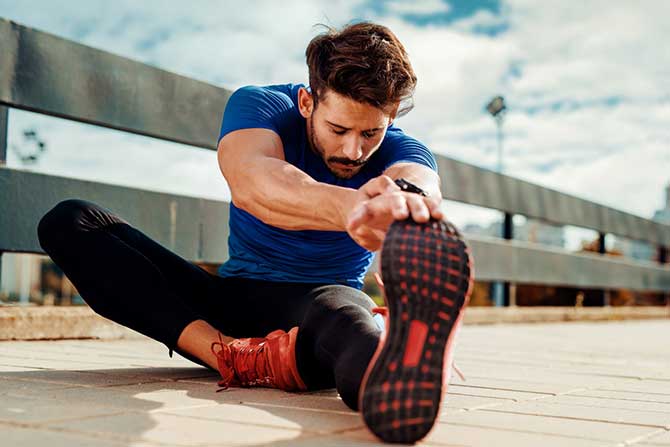
Stretching for recovery and relaxation after exercising
This, however, does not mean that stretching has no effect or is completely pointless:
"While there is no scientific evidence regarding injury prevention through stretching, it can still have a positive effect" says the scientist. "stretching for relaxation and recovery after exercising can absolutely be useful, which is why a generalising 'no' to stretching is also wrong. Stretching can, for example, increase the perception of individual muscle groups. This can promote targeted relaxation and the increased blood circulation can aid regeneration."
Advantages of stretching
In the age of homo digitalis, who is damaged from sitting in a chair all day, stretching exercises are even important to counteract the shortening of certain muscles:
"Muscles with a tendency towards shortening over time, such as the anterior chest muscles or the anterior pelvic muscles, should be stretched regularly in order to maintain mobility," recommends Dr. Wilke. "Stretching can help maintain muscle balance in the short term by lengthening shortened muscles and reducing their tension. And it helps stressed people to loosen up and relax."
This video will show you how you can stretch your chest:
This video will show you how you can stretch your anterior pelvic muscles, also known as the hip flexor:
Conclusion: Stretching after a run can definitely help you, it just won't prevent muscle soreness.
Benefits of stretching:
- Increasing the perception of individual muscle groups and thus promoting targeted relaxation
- Faster regeneration thanks to increased blood circulation
- Maintains mobility
- Relaxation for stressed people
Stretching before a run
Does stretching before a run have any benefits or is it even detrimental to your health? Dr. Wilke sheds some light on this.
Stretching before a run? Don't forget to warm up first!
Generally, there is nothing wrong with a few stretches before a run, says the sports scientist: "Whether you prepare for a run and how you do it depends entirely on your personal preference. Therefore, there is no right or wrong when it comes to stretching. Some athletes swear by it, others prefer a light jog."
Make sure you don't forget to warm up though: "It is important to bring your muscles up to working temperature", says the scientist. "How you do this doesn't necessarily matter. Since running mostly puts stress on your lower extremities, you should pick stretches that focus on them. Examples of good stretches include stretching your posterior and anterior leg muscles."
The following stretches can be incorporated into your pre-run routine.
Stretch 1: Stretching the posterior leg muscles
"To stretch your posterior leg muscles, stand up right and curl the toes on your left foot up towards your body: You should feel a light stretch in the back of your leg. Repeat the exercise on the right foot."
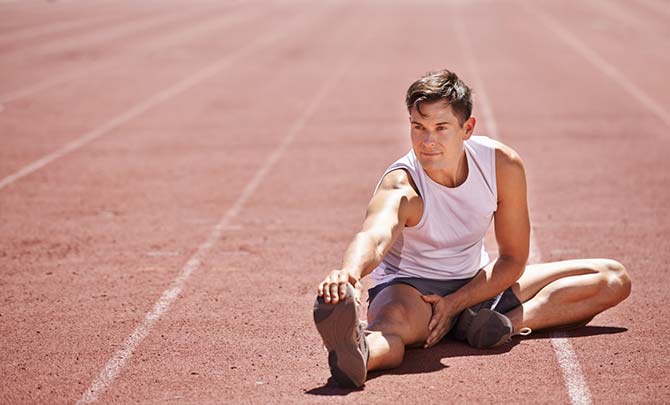
Stretch 2: Stretching the anterior leg muscles
"For the front of the leg stand with your feet a hip width apart. Now bend one leg backwards and try to touch your heel to you buttocks. You can also use your hand to pull your leg towards your buttocks. Try to grab your ankle in order to stretch your muscles optimally. Afterwards you can shake out your legs."
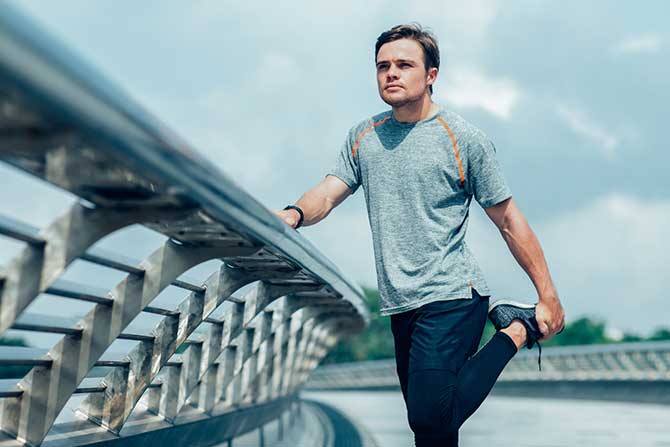
Stretching after a run
Stretching after a run can certainly have a positive effect: "This will aid your regeneration and lengthen shortened structures again", Dr. Wilke explains.
Smooth fasciae through stretching
By stretching you ensure that your connective tissue fibres, the fasciae, remain supple: "Stretching has a positive effect on the fasciae as it helps loosen up agglutinations. This will increase your mobility."
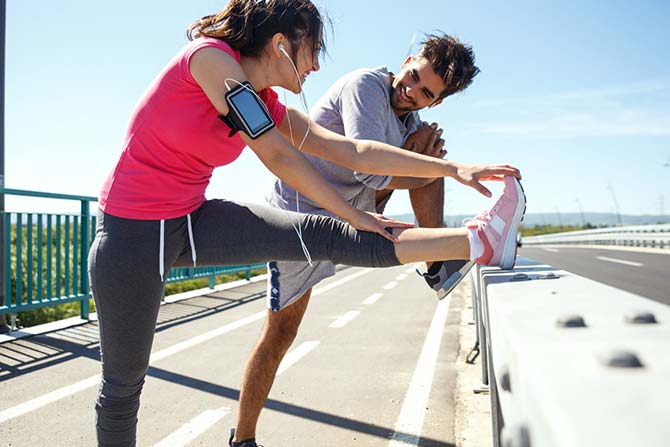
The important thing is that you "do your stretches in a calm and focused manner to get the most out of their relaxing effect."
While you should be doing "more dynamic stretches with controlled breathing" when doing sports, stretching "after sports can also be static": "Hold the position for 2x20 seconds."
Stretching: Focus on your lower body
"After a run your focus should also be on your lower extremities", Dr. Christiane Wilke explains. "Now you can also incorporate your glutes and the lower back into your stretching routine."
These stretches can be used after a run:
Glute stretches
"To stretch your glutes, bend your knees slightly and cross your right foot over your left knee. Lightly press against your right knee. You should feel a light stretch in your glutes. Repeat this on the other side."
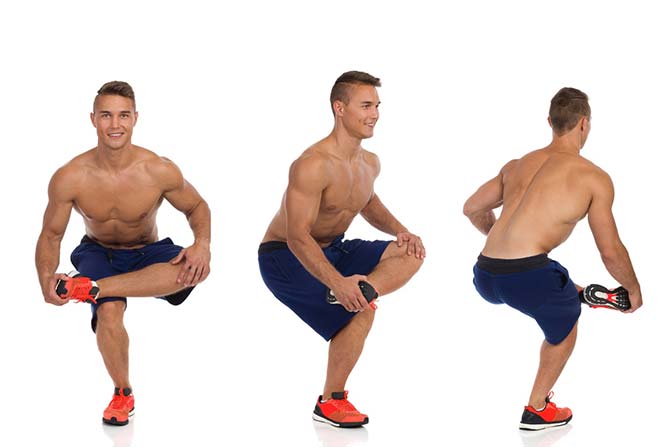
Stretching your back
"To stretch your back, lock your fingers together, turn your palms outwards and reach up over your head as far as you can. Starting from your head, start rolling forward slowly, vertebra by vertebra. This exercise loosens up your back muscles and your spine."
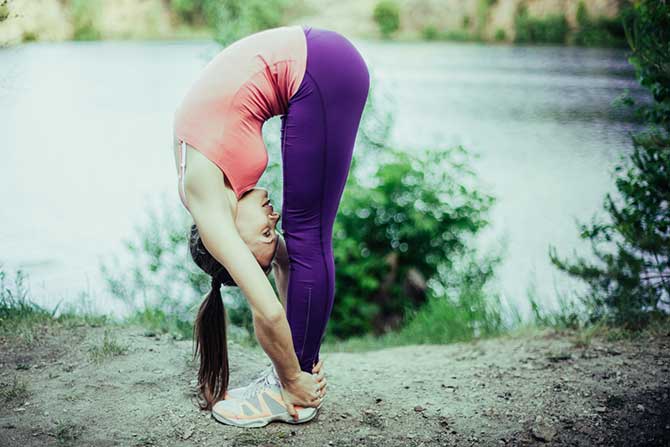
Proper stretching: It's all about your technique
To get the desired effects from stretching and prevent injuries, you should keep a few basic rules and techniques in mind.
Rules for proper stretching: S-H-R-S stretching technique
Keep the following rules in mind when stretching:
- Keep a straight back.
- Feeling a stretch is important but be wary of pain.
- Employ dynamic stretches during sports.
- After sports you can also use static stretches.
- When stretching statically, do not move abruptly and do not bounce. Otherwise you may pull muscles, ligaments and joints.
- Hold each position for at least 20 seconds. Repeat the stretch for another 20 seconds.
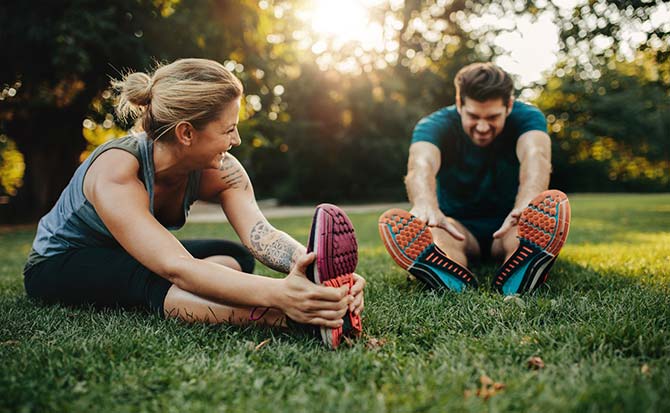
To get the most out of your stretching routine, remember the "S-H-R-S" rule:
- S tretch carefully until you feel a light pulling sensation.
- H old your position for approximately 20 seconds.
- R elax for 3 seconds.
- S tretch for another 20 seconds. Try to go a little deeper into your stretch this time around.
When not to stretch
Even if stretching exercises can have a positive effect on the regeneration of athletes, it should also be taken with caution:
"Stretching has long been considered a remedy against muscle soreness. No study has been able to prove this. On the contrary, stretching can cause further micro tears in your muscles, which are ultimately responsible for muscle soreness", says Dr. Wilke.
In the following cases, Dr. Wilke recommends against stretching:
- Severe and acute pain
- Inflammation
- New hematomas
- Hypermobility of joints
In the following video, physical therapist Greg Schultz talks about why stretching is important:
Proper stretching: An overview
As a runner you can stretch before or after a run. Stretching is not automatically useless or even bad for you. You should, however, keep a few things in mind. We are now going to summarise the most important points from this article.
The effects of stretching
- Stretching does not prevent muscle soreness - on the contrary: It might even cause further muscle soreness.
- Stretching has a positive effent on your fasciae and it can loosen agglutinations.
- Stretching helps preserve or even improve mobility.
- Stretching lengthens shortened structures (e.g. anterior chest muscles, hip flexor).
- Stretching helps with targeted relaxation after sports.
- Stretching increases blood circlulation which aids in athlete recovery.
Rules for proper stretching
- Do not stretch with severe and acute pain, inflammations, new hematomas or with hypermobility.
- Stretch in a focused and calm manner.
- Use dynamic stretches during sports.
- After sports you can do static stretches. Make sure you do not bounce.
- Adhere to the S-H-R-S rule: S tretch, H old position for 20 seconds, R elax for 3 seconds, S tretch again for another 20 seconds.
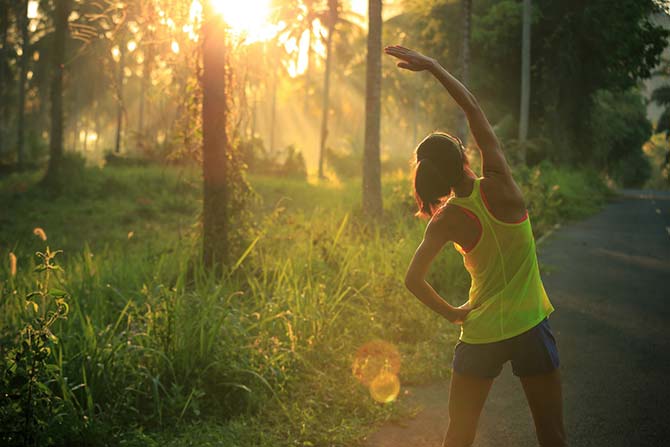
Thank you to Dr. Christiane Wilke for this very insightful interview.
If you are looking for more tips on running, here are a few reading recommendations from our magazine:
- Proper running technique: Tips from a professional runner on how to improve your running techniqe
- The right outfit for running: What to wear for a marathon. The correct clothing, shoes and equipment for every weather condition
- Tips and tricks for running in the winter: How to stay fit and healthy despite the cold and snow
Discover running jerseys and other running products you can customise to your liking in the owayo jersey Kit Designer.
Photo credits: Title picture: © E+/sanjeri; Bild 1: © iStock / Getty Images Plus/ Ivanko_Brnjakovic; Picture 2: © E+/ PeopleImages; Picture 3: © iStock / Getty Images Plus/MangoStar_Studio; Picture 4: © iStock / Getty Images Plus/ PointImages; Picture 5: © iStock / Getty Images Plus/loco75; Picture 6: © iStock / Getty Images Plus/ MangoStar_Studio; Picture 7: © iStock / Getty Images Plus/ Jacob Ammentorp Lund; Picture 8: © iStock / Getty Images Plus/ lzf